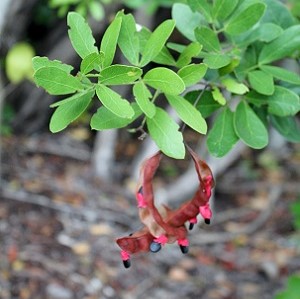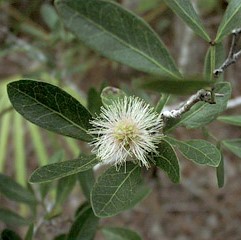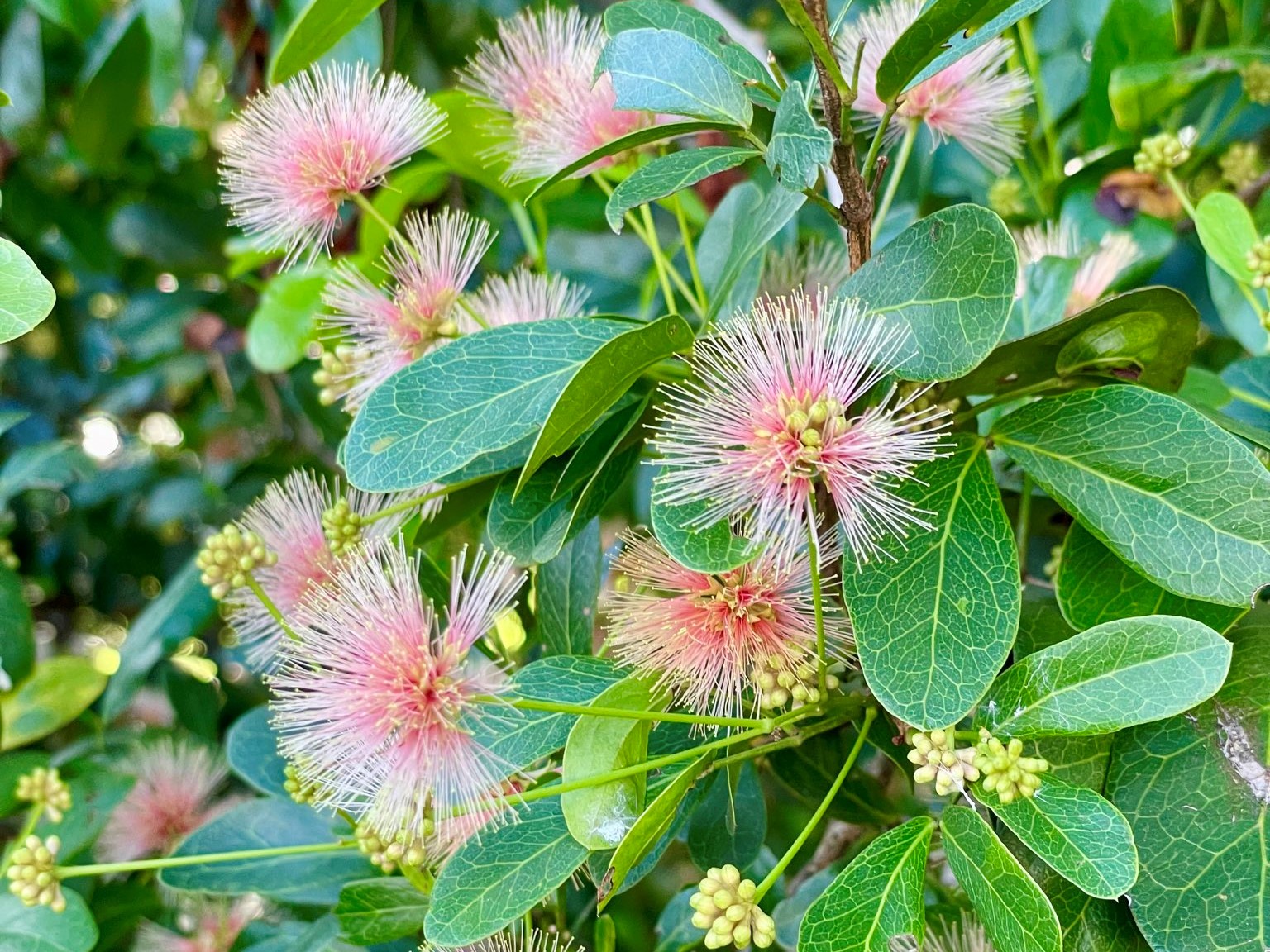Florida Keys blackbead
Pictured above: Florida Keys blackbead (Pithecellobium keyense) taken by Andrew Kearns at the Jose Marti MAST Native Arboretum. Click on terms for botanical definitions. View post as a PDF.
Florida Keys blackbead (Pithecellobium keyense) is a lovely tropical shrub that is fairly common to coastal hammocks in Southeast Florida. Its beautiful blooms and wildlife value make it a great addition to the home landscape. It serves as a larval host for the Cassius blue and Orange giant sulfur butterflies and provides nectar to many other pollinators including the endangered Miami blue butterfly. The low canopy it creates provides cover for wildlife and the seeds are a favorite of many birds including the rare White-crowned pigeon.
A branching shrub to small tree with a short trunk, the bark is gray with shallow fissures. Pinnately compound leaves have 2-inch-long leaflets. Flowers are a powderpuff-like and range from pink to white in color. The coiling reddish seed pods are a distinct feature that open when ripe revealing a deep red fleshy aril and black seed.


The common name is a reference to the black seeds, which have been used as beads for jewelry. This plant has also been recorded to be rich in tannins and used medicinally to stop bleeding. In the Bahamas, leafy twigs have been chewed or used as a tea to stop bleeding in early to mid-pregnancy.
Family: Fabaceae (Legume, bean or pea family)
Native range: SE Florida from Martin to Monroe County.
To see where natural populations of Florida Keys blackbead have been vouchered, visit florida.plantatlas.usf.edu.
Hardiness zone: 10A–11B
Lifespan: Perennial
Soil: Sandy or limestone soils
Exposure: Full sun
Growth habit: shrub/small tree
Propagation: Seed
Garden tips: The plant can be used as an accent or specimen plant as well as in a buffer planting
Plants are occasionally available from nurseries that specialize in Florida native plants. Visit PlantRealFlorida.org to find a nursery in your area.

